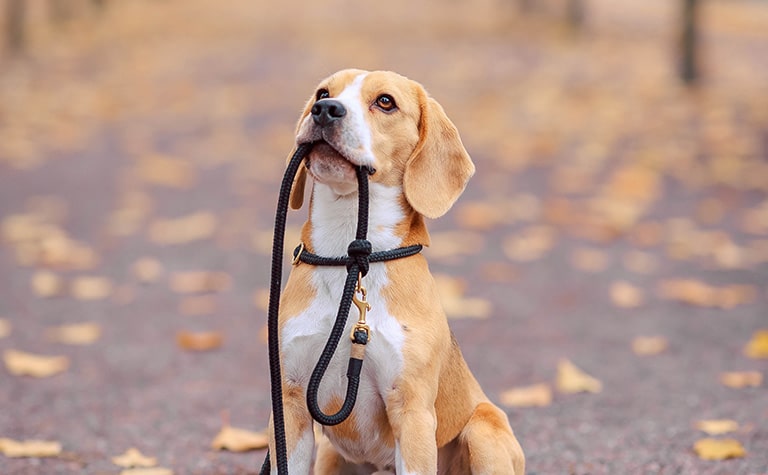Walking a dog is universally seen as one of the core exercises a pet owner needs to provide to their furry friend. Walks can provide mental enrichment and be quality time for an animal owner and their dog. These outdoor excursions do not just involve these two individuals, but affect everyone in the neighborhood. Where a dog goes to the bathroom, how well the animal is trained and interactions with others are some ways that a dog walk can impact the community.
This blog discusses the importance of training your dog to walk on a leash, dog walking etiquette everyone should follow and ways to bond with your dog on walks.
Train Your Dog to Walk on a Leash
Walking an untrained dog can be an unpleasant experience for both the owner and others nearby. A dog that has not gone through training tends to pull, lunge and bark constantly during outdoor exercise. The best way to teach a dog how to walk on a leash is through positive reinforcement.
This reward-based training rewards the dog when they choose good behavior and trains them not to do a particular bad behavior. The prizes consist of treats, praise and a toy. This way of teaching encourages a positive bond between owner and dog and creates a fun environment for learning. Important behaviors to check off when training a dog are to not pull, have good recall and to focus on you only. Read this blog to learn more about how to train a dog to walk on a leash.
Part of teaching a canine to walk properly is choosing the right leashes, collars and harnesses. There are many different kinds out there on the market from choke collar to slip lead. How you choose the right one depends on the size of the dog, how they pull, if they are escape artists and what material they are comfortable wearing.
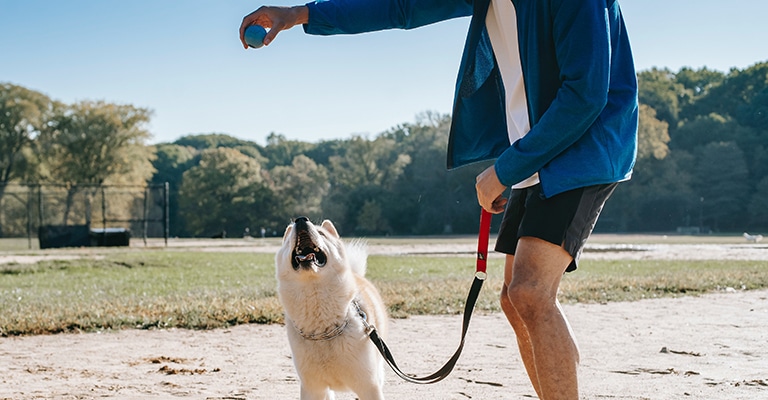
Dog Walking Etiquette
Do Not Let Your Dog Approach Without Permission
Not every dog or human is an animal lover. Your dog may be extremely friendly and enjoy meeting others, but it is bad etiquette to expect the same attitude from every canine and person you encounter on a walk. Always ask for permission to approach and be respectful if the offer is declined. Keep your dog on a six-foot leash to prevent dangerous situations and maintain full control of your extroverted dog. This also stops your dog from jumping on anyone.
Stay alert to others while walking. Maintain a wide berth if the dog or human is displaying a nervous attitude. When passing someone on the sidewalk, keep your body between your dog and the person you’re passing. These actions help to ease the anxiety of other dogs and humans.
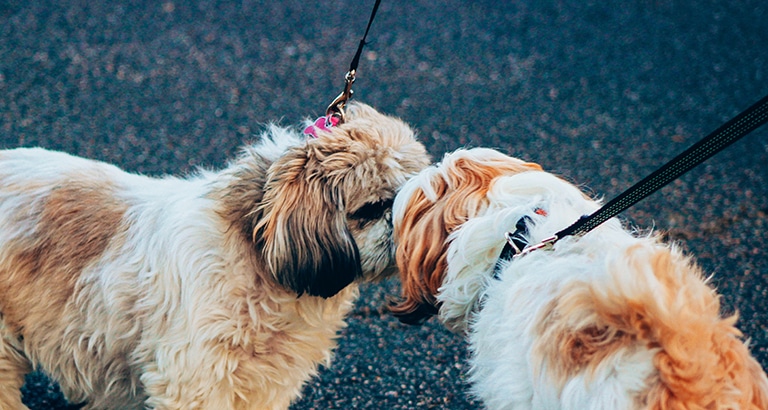
Pick Up After Your Dog
Picking up dog poop is a stinky but necessary practice – not just to be polite to others, but because dog poop isn’t good for grass. There is a common misconception that dog poop is similar to fertilizer and is healthy for our yards, but in reality it can kill the grass if left unattended due to the acidity in the stool. Dogs also do not eat directly from the ecosystem, but instead eat nutrient-dense processed pet food, and their stool introduces excess nitrogen and phosphorus to the environment when not disposed of properly.
Dog poop can spread disease to other dogs and humans through parasites, bacteria and viruses. These germs can be passed through direct contact with the infected stool or soil. Some diseases a human or dog could contract are: E.Coli, salmonella, tapeworm, ringworm and parvovirus.
Grabbing a bag and picking up your dog’s poop may be required by law in your area. Many towns, parks and communities put local laws into place to prevent their spaces from being littered with canine stool. Fines can be anywhere between $50 to $2000.
Respect People’s Lawns
Do not allow your furry friend to treat other lawns the same as their own. Landscaping is expensive and some people in your neighborhood do not have dogs for a reason. Dog urine is a grass killer and no one enjoys having their lawn decorations peed on. Try to keep the dog on the road verge (the grass between the sidewalk and the street) to do their business.
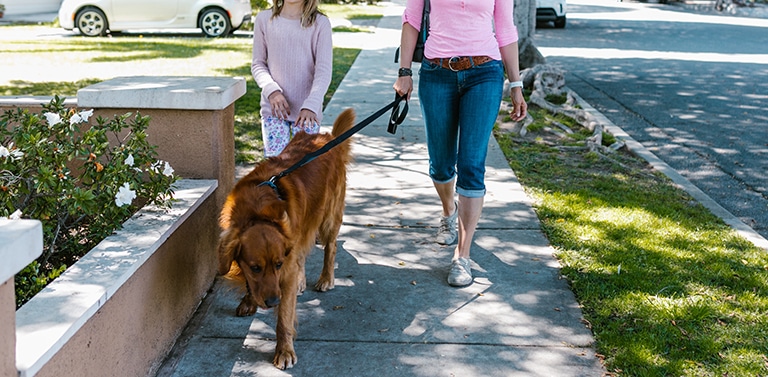
Bonding With Your Dog on Walks
Taking a dog for a walk is not just for letting them go to the bathroom or for exercise. This time is also for bonding with the dog. Use this one-on-one time to watch your dog explore the world around them. Pay attention to their body language in different situations to learn more about what makes your dog happy, nervous, mad or curious.
Stay Off Your Phone
This may seem like a great time to call up a friend or scroll through social media, but a dog interprets it as their owner ignoring them. The canine may act out to try to get their owner’s attention. A distracted owner may also not be aware of any dangers around them and their pet. In either situation, the disaster is avoidable by putting the phone away.
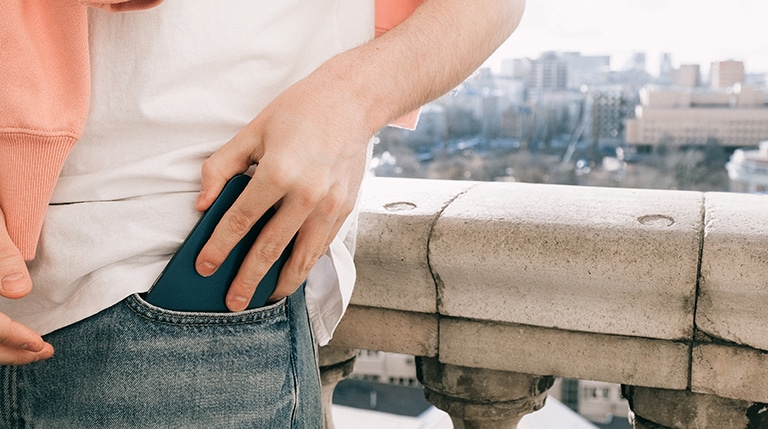
Interact with your Dog
Talking with your dog and interacting with them on a walk both improves your bond and establishes your leadership. The owner guides the dog through different situations and environments on the walk and shows the dog that they can trust their owner to protect them. A dog also feels happy when their owner is paying attention to them.
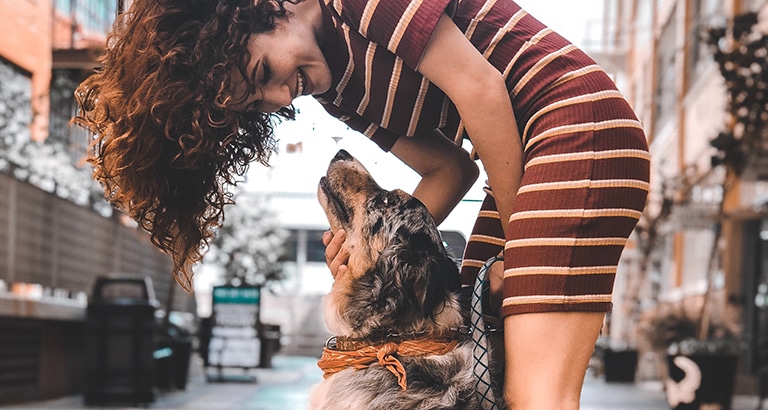
Change up the Routine
Shaking up a dog’s routine makes walks more exciting to them. On new routes they are able to encounter new smells and new scenery. Walks are a great way for dogs to have mental stimulation, but if they are always on the same exact path they become bored.
Simple but Important
A walk may seem like a simple thing, but it can have a negative or positive effect on many individuals. Training your dog and adhering to the dog etiquette rules keeps your dog and others safe. It also maintains a good relationship with your neighbors and community.
A quality walk where the owner is present can do wonders for a dog’s mental health. Putting the phone away and interacting with your dog makes them happy and strengthens the bond. Switching up routines keeps things from getting boring. In these ways a simple walk can become very important.


